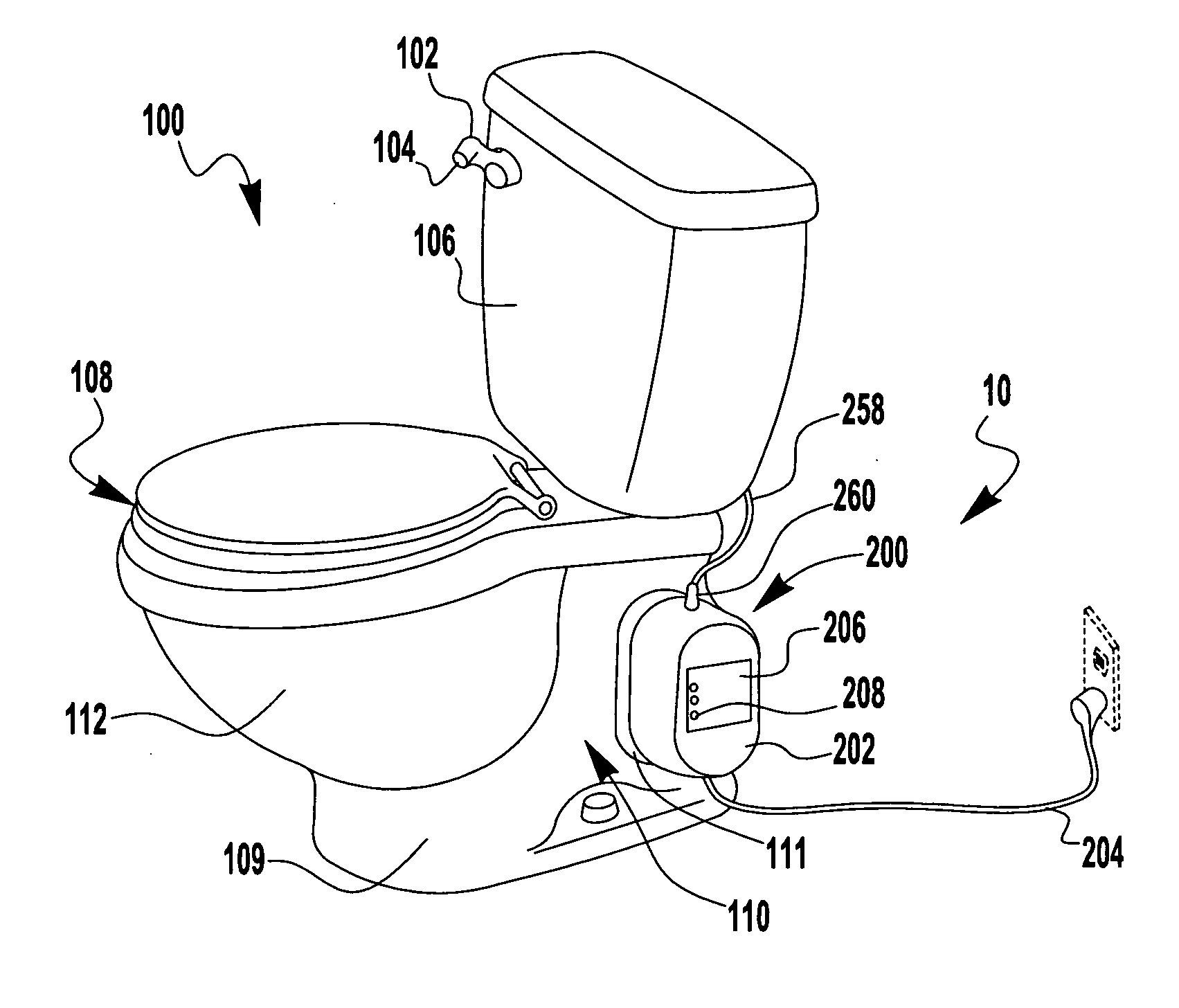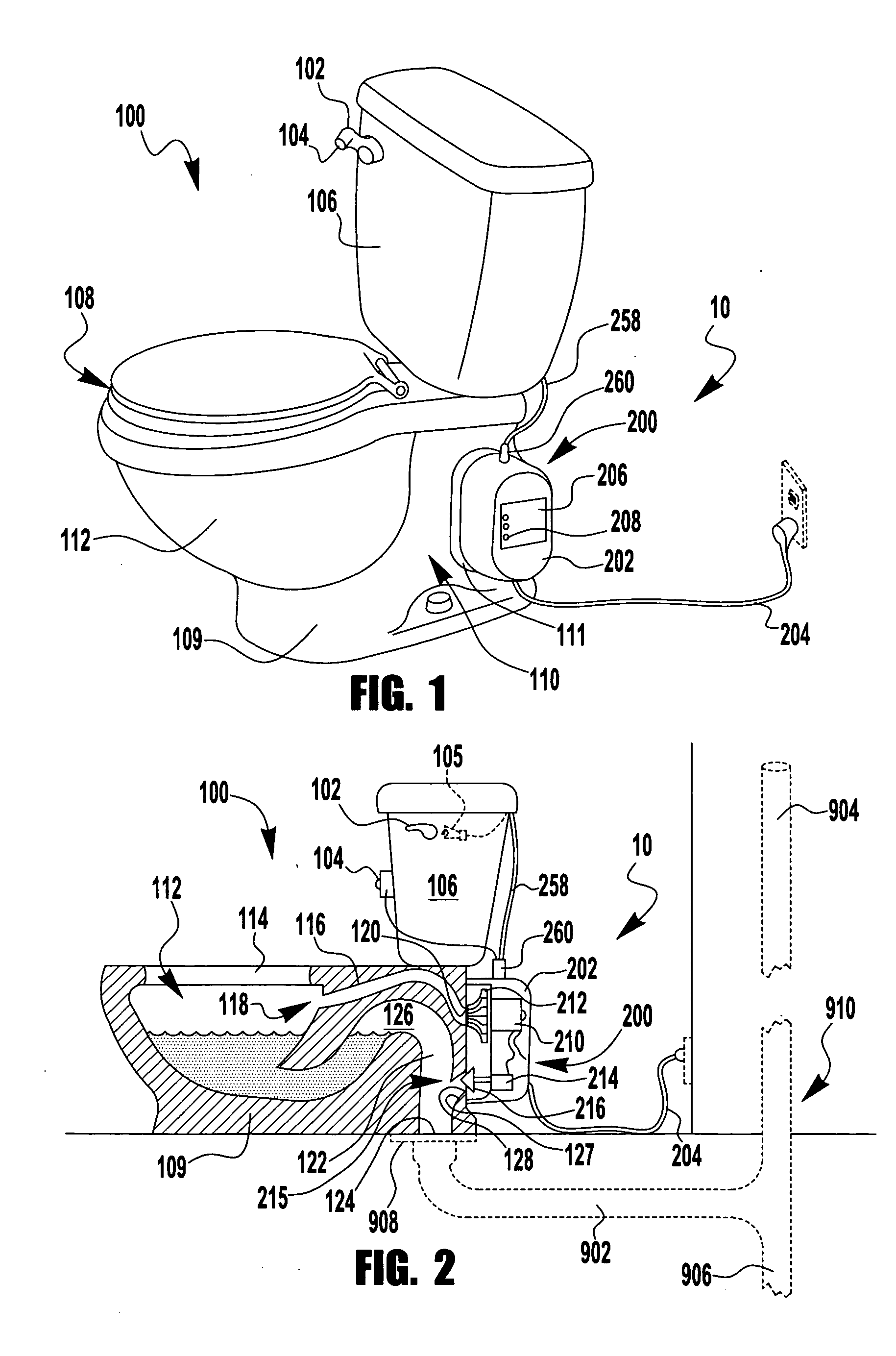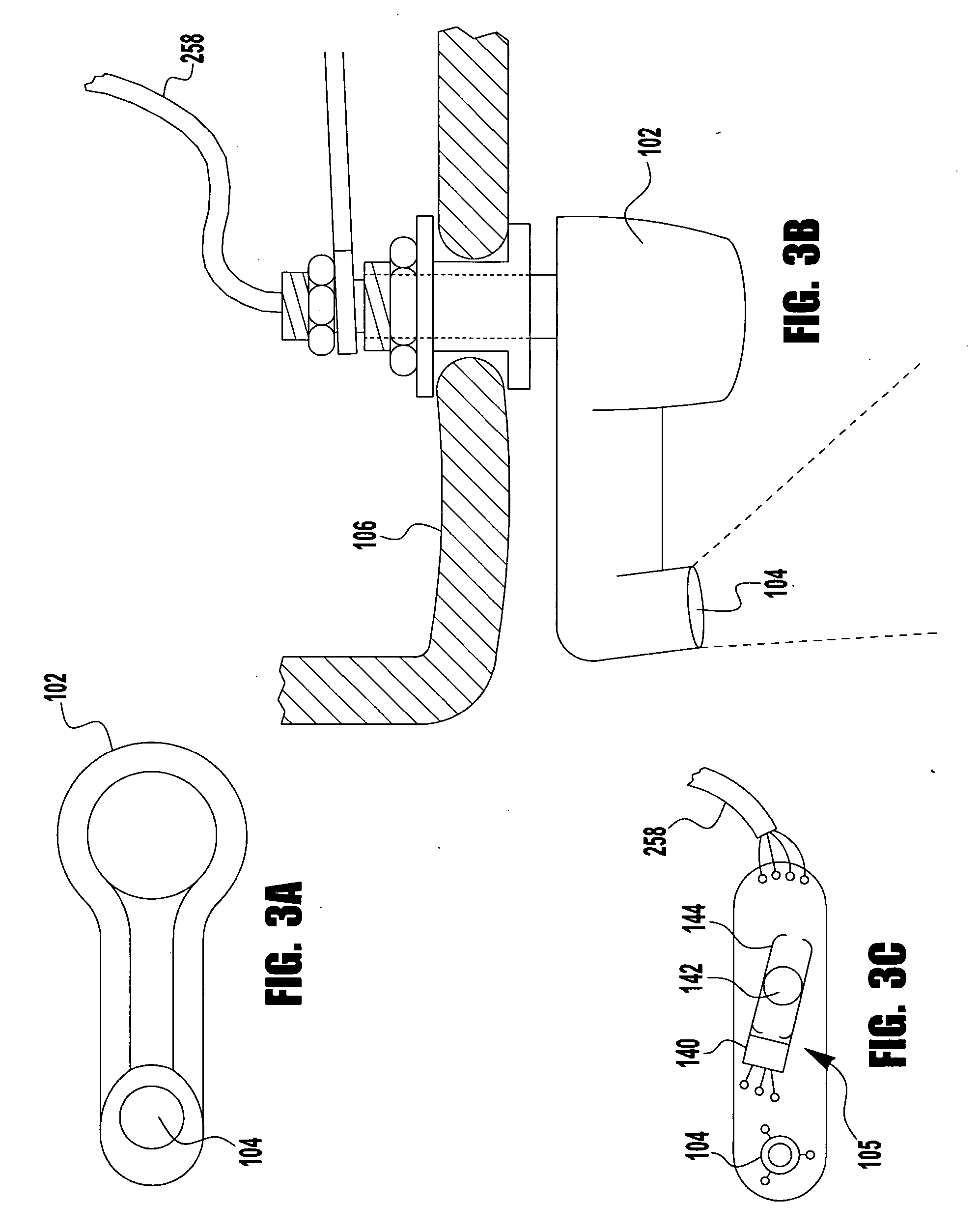Toilet ventilation system
- Summary
- Abstract
- Description
- Claims
- Application Information
AI Technical Summary
Benefits of technology
Problems solved by technology
Method used
Image
Examples
first embodiment
[0053] Backflow Valve Details (First Embodiment)
[0054] The blower housing 202 contains a backflow shutoff valve 215 (backflow valve). Its purpose is to close off the ventilation ducts 116, 127 when the blower 200 is not operating, thereby stopping sewer gases from backing out of the ventilated toilet 100. Therefore, closed is the normal state of the backflow valve 215. A stopper for the backflow valve 215 may be a butterfly 217, a poppet 216, a flapper (not shown), or other related valve mechanisms. A design choice should consider one with enough flow capacity to offer minimum resistance to the airflow in the open position. In a first embodiment, the backflow valve 215 is opened, and held open, by an actuator (e.g., a solenoid) 214 when energized. The closed position is maintained by a spring bias in the solenoid 214 or at some other point in the linkage between the solenoid 214 and stopper 216, but preferably not in the airway 230. Between the airway 230 and a sealed motor / electric...
second embodiment
[0056] Backflow Valve Details (Second Embodiment)
[0057] Referring in particular to FIG. 7, a second embodiment of the backflow valve 215′ is shown built into the blower housing 202 which is shown in a partial cross-sectional view with a housing inlet duct 232 portion of the airway 230 leading into the blower unit 200 from the blower intake hole 218 (not shown), and a housing outlet duct 234 portion of the airway 230 leading out of the blower unit 200 to the blower output hole 220 (not shown). The second embodiment of the backflow valve 215′ is simpler than the electromechanical first embodiment backflow valve 215 described hereinabove, and should give equal or better overall performance and be less costly to manufacture.
[0058] The basic operation of the second embodiment of the backflow valve 215′ is to use rotary torque from the blower motor 210 to obtain linear motion to open a port in the airway 230 (e.g., housing inlet duct 232), allowing air to flow into the modified impeller ...
PUM
 Login to View More
Login to View More Abstract
Description
Claims
Application Information
 Login to View More
Login to View More - R&D
- Intellectual Property
- Life Sciences
- Materials
- Tech Scout
- Unparalleled Data Quality
- Higher Quality Content
- 60% Fewer Hallucinations
Browse by: Latest US Patents, China's latest patents, Technical Efficacy Thesaurus, Application Domain, Technology Topic, Popular Technical Reports.
© 2025 PatSnap. All rights reserved.Legal|Privacy policy|Modern Slavery Act Transparency Statement|Sitemap|About US| Contact US: help@patsnap.com



